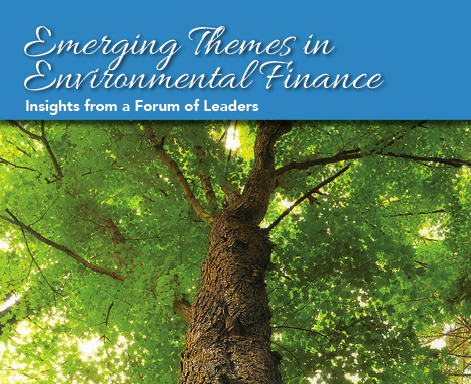The intersection between public finance and environmental sustainability is a complex and often challenging space. However, where there are challenges, there are also opportunities. Projects and initiatives that link together public finance and environmental sustainability can be found at any scale – at the organizational, local, regional, state, or national level – and in any environmental context; water, sewer, energy, land conservation, solid waste management, etc. Increased focus on environmental sustainability has led to dramatic transformations at all levels of private sector, institutional, and governmental operations that have important finance implications. Facilities are being built that use far less resources. Distributed renewable energy is becoming a viable alternative energy option. Private businesses, universities, local governments, and state governments are making investments that reduce the environmental impact of their operations.
New financial instruments, for example green bonds, are providing borrowers and investors with new choices. These developments often have significant financial implications related to who pays, how much they pay, and how they pay for essential services and products.







